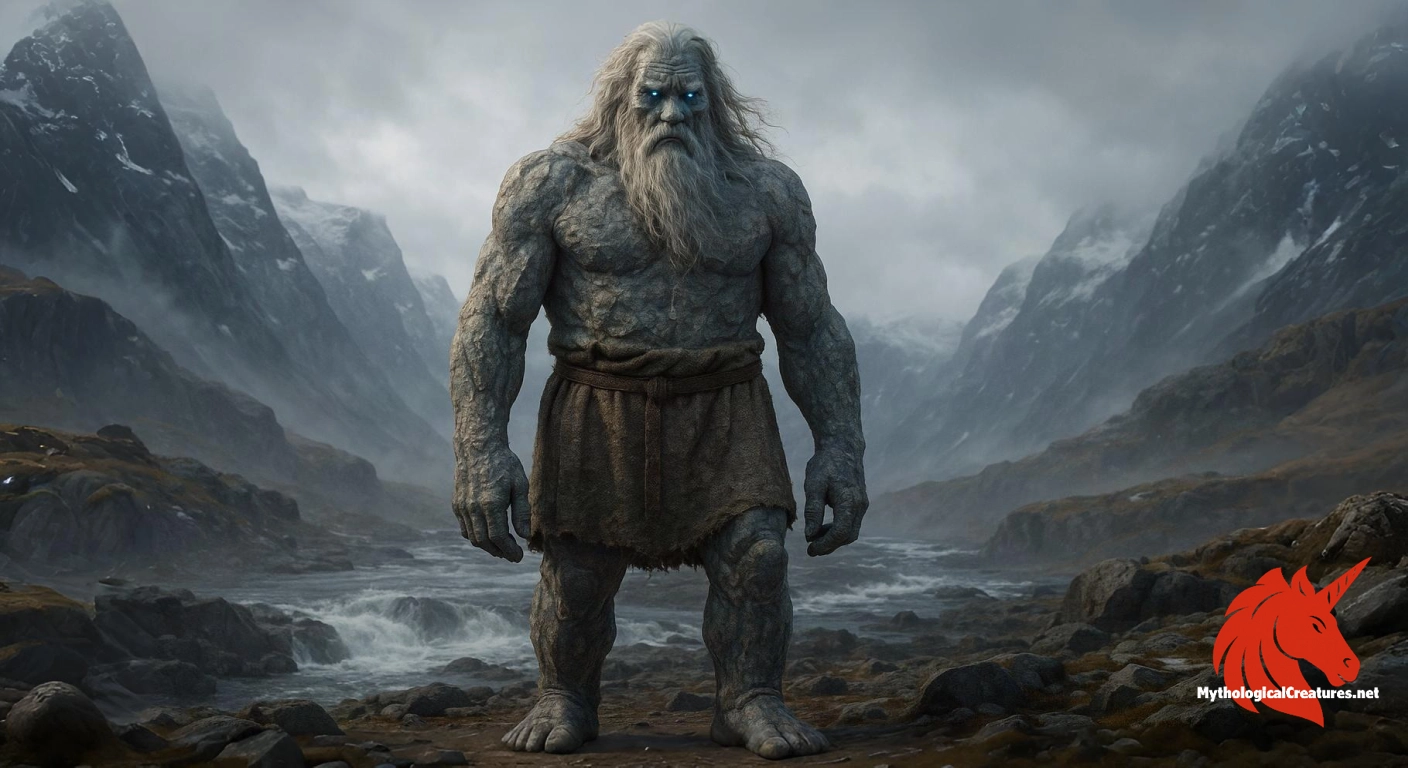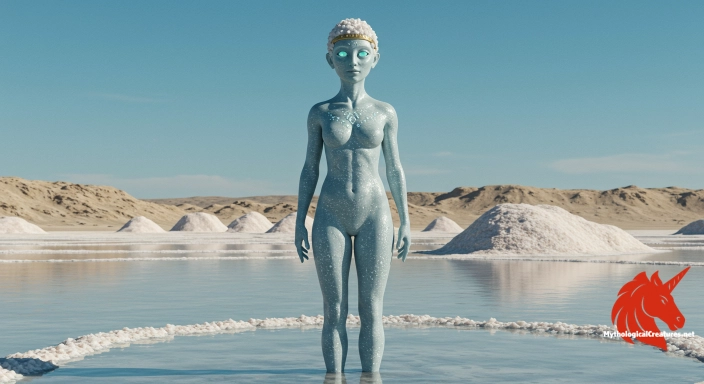Ymir: Ymir is the primordial giant from Norse mythology whose body forms the cosmos and who is the progenitor of all jötnar.

Ymir
Ymir - Ymir's body provided the raw material for the formation of the world, making him a central figure in the Norse creation myth
Origins & First Encounters
Ymir stands as one of the most enigmatic primitives in Norse mythology, emerging from a chaotic pre-world where elemental forces converged. His origins are rooted in the mysterious interplay of eitr and the icy venom of the primordial rivers, marking the beginning of cosmic creation. Early attestations of his myth appear in the Poetic Edda and the Prose Edda, both compiled in the 13th century, yet his story harks back to an even older, oral tradition. Known also by names such as Aurgelmir, Brimir, and Bláinn, Ymir’s multiple appellations reflect his vast and multifaceted presence in ancient lore. His role as the progenitor of all jötnar underscores how early Norse cosmology sought to explain the origins of both order and chaos. The myth surrounding Ymir is interwoven with themes of birth and dissolution, acting as a linchpin in the profound narrative of creation and destruction. His emergence from the grassless void of Ginnungagap encapsulates the transition from formless darkness to a universe filled with structure and life. The ancient Norse people saw in Ymir a symbol of raw natural power, a force that was as creative as it was destructive. His mythic journey has been a source of intrigue, reflecting cultural attempts to understand the universe’s mysterious beginnings.
Source Texts & Tale Variants
The primary narratives of Ymir are preserved in some of the most influential texts of Norse mythology, notably the Poetic Edda and the Prose Edda. These works, along with the poetry of skalds, offer a window into how ancient cultures wove oral tradition into written literature. In the Poetic Edda, Ymir is depicted as a primeval giant brought forth from the elemental atter, with details that evoke the interplay between chaos and order. The Prose Edda complements and sometimes diverges from these earlier accounts, layering additional details such as the role of the primeval cow Auðumbla. Various stanzas in these texts reveal different facets of his creation, suggesting a complex and evolving narrative. Some versions focus on the violent aspects of his demise at the hands of Odin, Vili, and Vé, while others highlight his role as the originator of all giants and natural elements. The diversity in accounts mirrors the fluidity of the oral tradition from which these texts were derived. These sources, though compiled centuries later, continue to shape our understanding of Ymir’s myth while inviting scholarly debate about their origins. The richness of these texts ensures that Ymir’s legend remains a multifaceted story open to interpretation and reinterpretation.
Form & Powers
Mythic descriptions of Ymir evoke an image of a being whose physical form transcends the ordinary, embodying the vastness of primordial chaos. His enormous stature is not defined by fixed dimensions but by an ever-shifting magnitude that symbolises the boundlessness of early creation. Ancient texts recount that from his armpits emerged a male and a female, highlighting an almost magical capacity for self-propagation. His limbs, described as giving rise to a six-headed entity, suggest a multifarious anatomy that defies the conventional laws of nature. The creative use of his body parts to form the Earth, oceans, mountains, and even the sky emphasises the interconnectivity between his physical essence and the natural world. His flesh, replete with a texture that is both raw and immense, becomes a blueprint for the emerging cosmos. Vivid imagery in the myths portrays his blood as a torrential force capable of carving out vast seas, while his hair transforms into the very flora that shapes the landscape. The dismemberment of his colossal form is presented not as mere destruction but as an act of cosmic reorganisation, imbuing his physicality with layers of symbolic significance. In every detail, Ymir’s body serves as a living testament to the creative and destructive energies that shaped the Norse universe.
Regional Faces
Across the varied landscapes of Scandinavia, Ymir’s myth has been adapted to reflect local perceptions of nature and the cosmos. In certain regional traditions, he is portrayed not only as a primordial giant but also as the ancestral figure of a vast array of jötnar, connecting him deeply with the local conceptions of the wild and untamed. Variations in his story, including the adoption of alternative names like Aurgelmir and Brimir, suggest a fluid narrative that could shift according to regional beliefs and environmental influences. Some communities emphasise his role as a cautionary emblem of primal excess, where the chaos of nature is both revered and feared. Local folklore often casts him as a symbol of raw, untamed power, reflecting the harsh and unpredictable climatic conditions of the Nordic regions. In these narratives, his very existence is intermingled with the cycles of seasonal change and the rugged character of the Scandinavian wilderness. Adaptations of his saga encapsulate a sense of local identity, framing his myth as integral to understanding the relationship between nature and human society. While the broader Norse myth centres on cosmic creation, regional variants highlight the more personal and immediate impact of his primordial energy on the land. These diverse adaptations ensure that Ymir’s story remains alive and relevant across different cultural landscapes.
Cultural Parallels
The myth of Ymir finds intriguing parallels in various world traditions that explore the concept of a primordial being from whose body the cosmos is fashioned. Much like the Norse giant, figures such as Tuisto in early Germanic texts and even the cosmic giant Purusha in Vedic traditions illustrate a recurring theme of creation through dismemberment. These cross-cultural narratives underscore a common human impulse to explain the origins of the world through a process of self-sacrifice and transformation. The imagery of a vast, bodily universe, where every component of a being is repurposed to create celestial bodies and earthly landscapes, resonates deeply across Indo-European mythologies. In Greek lore, the primordial Chaos from which the order of the cosmos emerges creates a fascinating comparison to the way Ymir’s corpse forms the basis of the Norse world. While each tradition offers its unique symbolic nuances, the underlying motif of birth from primordial disintegration provides a rich field for comparative analysis. These mythic parallels reveal a shared cosmological vision that crosses geographical and cultural boundaries, linking Ymir to a larger narrative of existential origins. The echoes of Ymir’s myth in other traditions emphasise the universal quest for meaning and the human desire to find order in the seemingly chaotic natural world. Through these comparative lenses, Ymir emerges as part of a broader tapestry of myth that seeks to understand the mystery of creation.
Legacy & Modern Evolution
Over the centuries, the myth of Ymir has undergone significant reinterpretation, evolving from its ancient origins into a symbol that continues to captivate modern creative and scholarly minds. In medieval Scandinavian literature, his narrative was reimagined to align with evolving religious and cosmological beliefs, often highlighting the dichotomy between chaos and divine order. His violent demise at the hands of Odin, Vili, and Vé was recast not only as a myth of creation but also as a metaphor for the cyclical nature of life and death. Modern literature and art have embraced Ymir’s story, imbuing it with layers of allegory that speak to themes of environmental destruction, rebirth, and the inexorable passage of time. Contemporary reinterpretations often portray him as a primordial force, a stark reminder of nature’s raw power and its capacity to reshape order from chaos. His story has also found resonance in popular culture, inspiring adaptations in novels, graphic novels, and films that explore the ancient dynamics of creation. In academic circles, Ymir’s myth is frequently examined as a pivotal case study in comparative mythology, helping to illuminate the shared human fascination with origins and destiny. Each generation finds in Ymir a potent symbol of both the fragility and resilience inherent in the cosmos. As modern storytellers continue to draw upon his narrative, Ymir remains an enduring emblem of the timeless struggle between the elemental forces that govern existence.
Interesting Fact
Interestingly, Ymir’s myth not only explains the origin of the world but also symbolizes the profound connection between creation, destruction, and the cyclical nature of existence in Norse cosmology.
Quick Creature Info
Origin:
Features:
Associations:
Our Mythic Legendary Rating:

Also Sometimes Known As:
Habitat:
Supernatural Powers:
Physical Attributes:
Abilities:
Behavior:
Weaknesses:
Lore:
References
Discover Another Mythical Legend You May Not Have Heard Of?
Uncover the mysteries of ancient folklore and expand your knowledge of legendary beings from cultures around the world.
Dare to Meet the Ninpumuna....
Mythical Disclaimer: The images and data on this site are derived from various historical and literary sources, but we have found that many myths often have multiple versions and interpretations across references, sometimes contradictory. As a result, these creature depictions are artistic interpretations—imaginative blends of folklore, legend, and a dash of AI guesswork. Because creature descriptions vary widely, our illustrations and accompanying information represent our best effort to honor mythology while bridging creative gaps. Enjoy these interpretations—just remember, we've done our best to respect the stories and validate available data, but in the realm of mythology, details often shift, imagination leads the way, and nothing is ever set in stone!
Curated by the Mythological Creatures Team (rev. May 2025)
